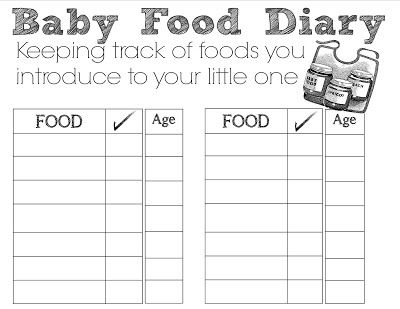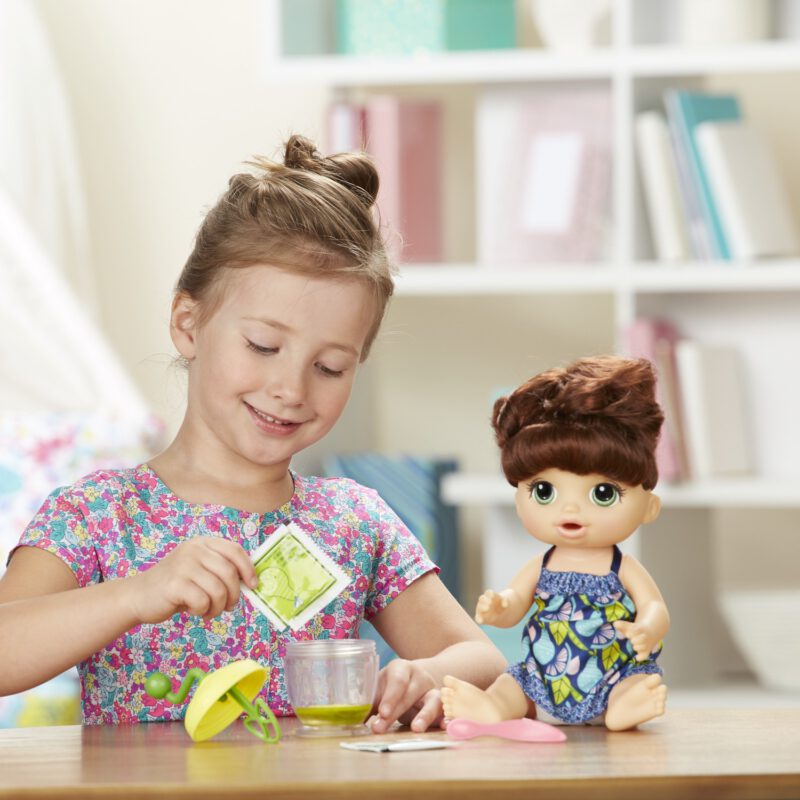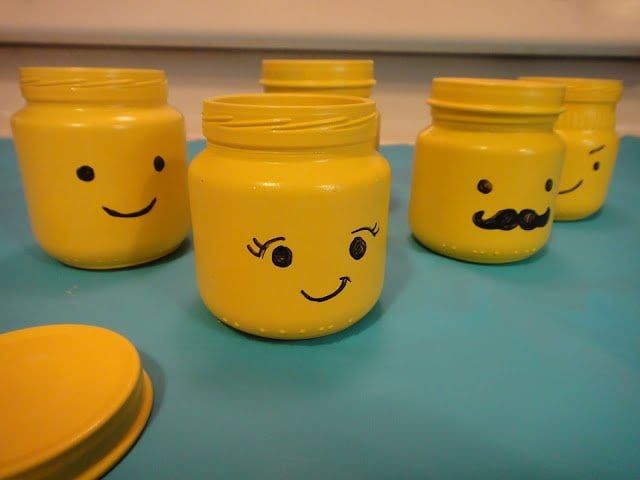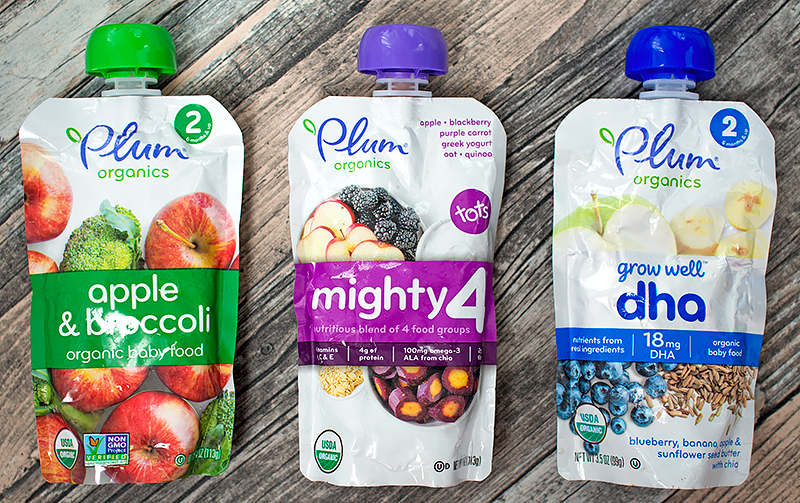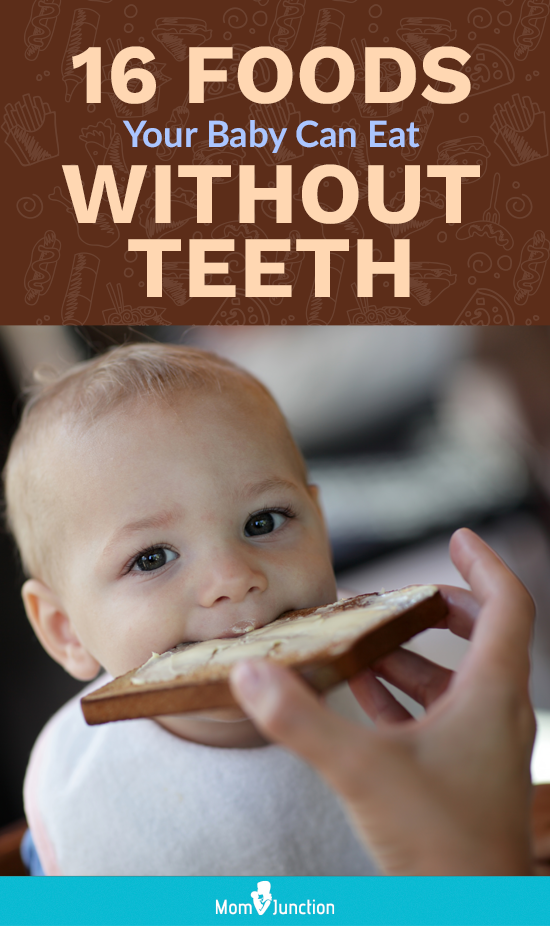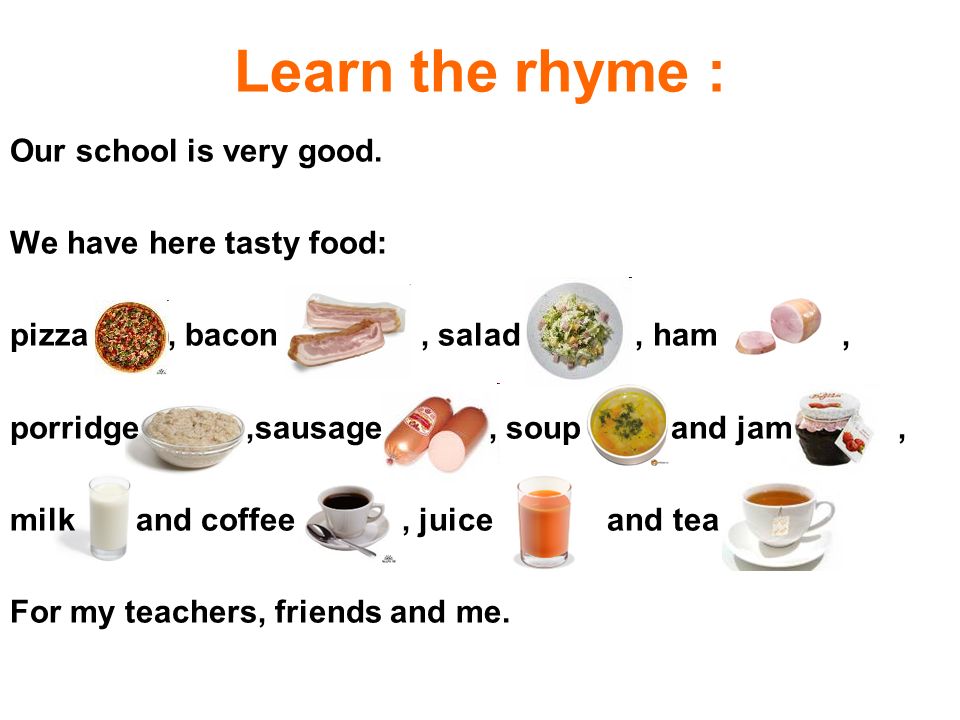Baby gags and coughs during feeding
Why Does My Child Keep Choking and Coughing?
It’s normal for a baby or young child to choke and cough from time to time. When it happens frequently, there could be cause for concern. These episodes are typically due to aspiration, food or liquid accidentally entering the airway. There are a number of potential causes, and your child’s doctor will develop a treatment plan based on your child’s unique case.
Signs and Symptoms
While choking and coughing are the most common signs, there are many possible symptoms that accompany swallowing disorders. They vary for babies and older children.
In babies, symptoms include:
• Choking and coughing while feeding
• Signs of discomfort during feeding, like watery eyes, irritability and grimacing
• Feeding times exceeding 30 minutes
• Face flushing or turning blue during or immediately after swallowing
• Faster or stopped breathing during feeding
• Weak sucking
• Wet-sounding breathing and vocalizations after feeding
• Slight fever after feeding
• Frequent lower respiratory infections
In older children, symptoms include:
• Choking and coughing while eating or drinking
• Frequent throat clearing
• Spontaneous choking on saliva
• Wet-sounding voice after meals
• Slight fever after meals
• Complaints of food feeling stuck
• Repeated lower respiratory infections
Some children have no obvious symptoms at all. It’s often not diagnosed until a lung infection develops.
Concerns and Complications
Repeatedly breathing in foods and liquids is more than just uncomfortable. It can pose a serious risk to your child’s health. Materials entering the airway can cause significant damage to delicate lung tissue. It can also trigger infections like aspiration pneumonia, a bacterial infection that causes fluid build up in the lungs. Pneumonia requires a long course of antibiotics to treat and can be life threatening.
In young children and babies, swallowing disorders make feeding difficult. This in turn leads to complications like dehydration, malnutrition and weight loss.
Causes and Risk Factors
The most common cause of swallowing disorders is dysphagia, a dysfunction in the muscles of the throat that control swallowing. Dysphagia is typically a symptom of a greater underlying problem, such as:
• Structural abnormalities in the palate or esophagus
• Heart disease
• Delayed growth due to premature birth, low birth weight or conditions like Down syndrome
• Nervous system problems from brain damage, cerebral palsy or other concerns
• Neuromuscular diseases like muscular dystrophy or spinal muscular atrophy
• Medical procedures involving the throat like tracheostomy or a nasogastric tube
Sometimes, the difficulty is a result of a more indirect concern like:
• Acid reflux (GERD) pushing stomach contents back into the throat
• Excessive saliva production
• Poor timing and coordination
• Rejection of certain foods due to conditions like autism
• Lethargy from other medical conditions
Getting a Diagnosis
Swallowing is split into three phases. During the oral phase, food enters and is manipulated in the mouth. In the pharyngeal phase, food is just beginning to enter the throat. The airway is supposed to close to keep food and liquid out. In the esophageal phase, the throat moves to allow food into the stomach without stomach contents coming back up. A choking problem can arise at any of these phases, and a thorough evaluation is needed to identify which one.
During the oral phase, food enters and is manipulated in the mouth. In the pharyngeal phase, food is just beginning to enter the throat. The airway is supposed to close to keep food and liquid out. In the esophageal phase, the throat moves to allow food into the stomach without stomach contents coming back up. A choking problem can arise at any of these phases, and a thorough evaluation is needed to identify which one.
Your child’s consultation will begin with a thorough medical history, physical exam and possibly some blood work. You can then expect your child to get a clinical swallow evaluation. During this session, your child will be given a variety of substances to eat and drink. The doctor will evaluate your child’s movement, comfort, behavior, posture and any choking or coughing that occurs.
To get a better look at the structures in your child’s throat, two other evaluations may be recommended:
• Fiberoptic Endoscopic Evaluation: a tiny camera is inserted into your child’s throat to monitor internal structures while they swallow
• Modified Barium Swallow Study: after your child drinks a barium solution to help with imaging, swallowing is viewed via x-ray
Treating Aspiration
Your ENT will develop a treatment plan based on where in the swallowing process your child is having difficulty and what the underlying cause is.
Some common treatments include:
• Surgery to correct structural abnormalities like a cleft palate
• Medications or surgery to address acid reflux
• Medications or surgery to address excessive saliva production
• Changing your child’s posture and positioning during meals
• Dietary changes
• Feeding therapy, which includes things like swallowing exercises and slow introduction of new foods
• Behavior management
Most children’s swallowing disorders improve over time. Children with severe difficulty swallowing may need a feeding tube until they can eat normally. A feeding tube, or nasogastric tube, is a thin tube that runs through the nose into the stomach. Your child’s ENT will monitor your child’s condition carefully and help them transition back to normal feeding as soon as possible.
If you suspect your child is suffering from chronic aspiration, it’s important to seek treatment before serious complications arise. Give Pediatric ENT of Oklahoma a call to schedule a consultation today.
Help! My Baby Is Choking on Milk!
Many parents look forward to feeding time with their baby. It’s a chance to bond and also gives you a few minutes of peace and quiet.
But for some, bottle feeding or breastfeeding can lead to gagging or choking sounds, which are alarming if you’re a new parent. Fortunately, there are things you can do to help prevent your baby from choking on milk or formula.
If your baby seems to gag a lot while eating, don’t panic. “Choking and gagging during feeding is common in young infants,” says Robert Hamilton, MD, FAAP, a pediatrician at Providence Saint John’s Health Center in Santa Monica.
Hamilton says babies are born with an exaggerated but protective “hyper-gag reflex,” which can cause gagging while feeding. Plus, babies gag easily due to their own neurologic immaturity.
“Babies are growing and learning new ways to use their body (and mouths) every day,” says Amanda Gorman, CPNP and founder of Nest Collaborative, a collection of International Board Certified Lactation Consultants.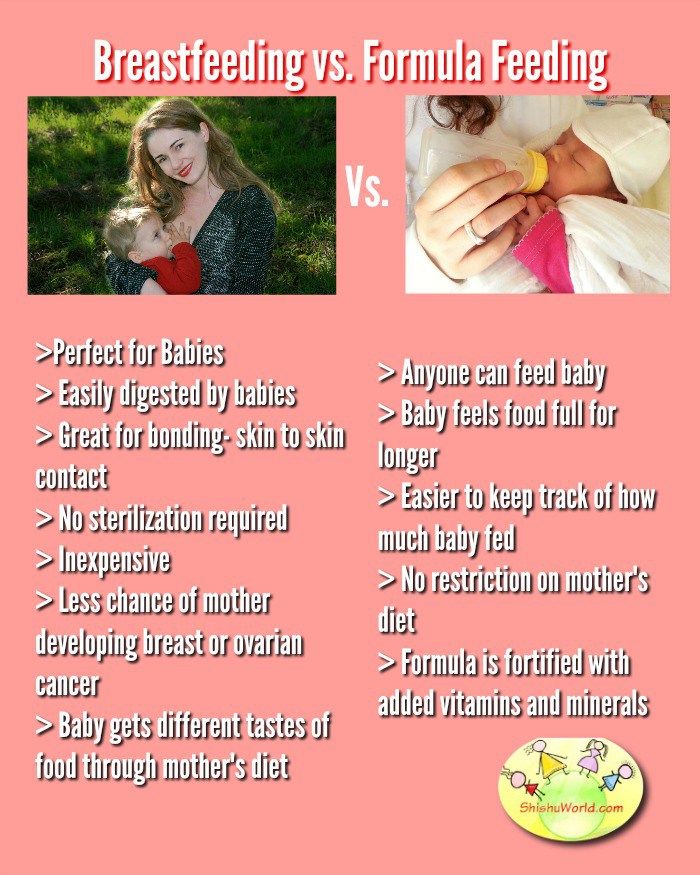
“Often, just stopping the feed and positioning the baby upright with good head and neck support will give them a few seconds to manage the problem.”
Gina Posner, MD, a pediatrician at MemorialCare Orange Coast Medical Center, says if your baby begins to choke, let them stop feeding for a little bit and pat their back. “Typically, if they’re choking on liquids, it will resolve quickly,” she says.
The most common reason a baby chokes during breastfeeding is that milk is coming out faster than your baby can swallow. Usually, this happens when mom has an oversupply of milk.
According to the La Leche League International (LLLI), common signs of oversupply include restlessness at the breast, coughing, choking, or gulping milk, especially at let down, and biting on the nipple to stop the flow of milk, among others.
You might also have an overactive let down, which causes a forceful flow of milk into your baby’s mouth. When your breasts are stimulated by your baby suckling, oxytocin causes the let-down reflex that releases the milk.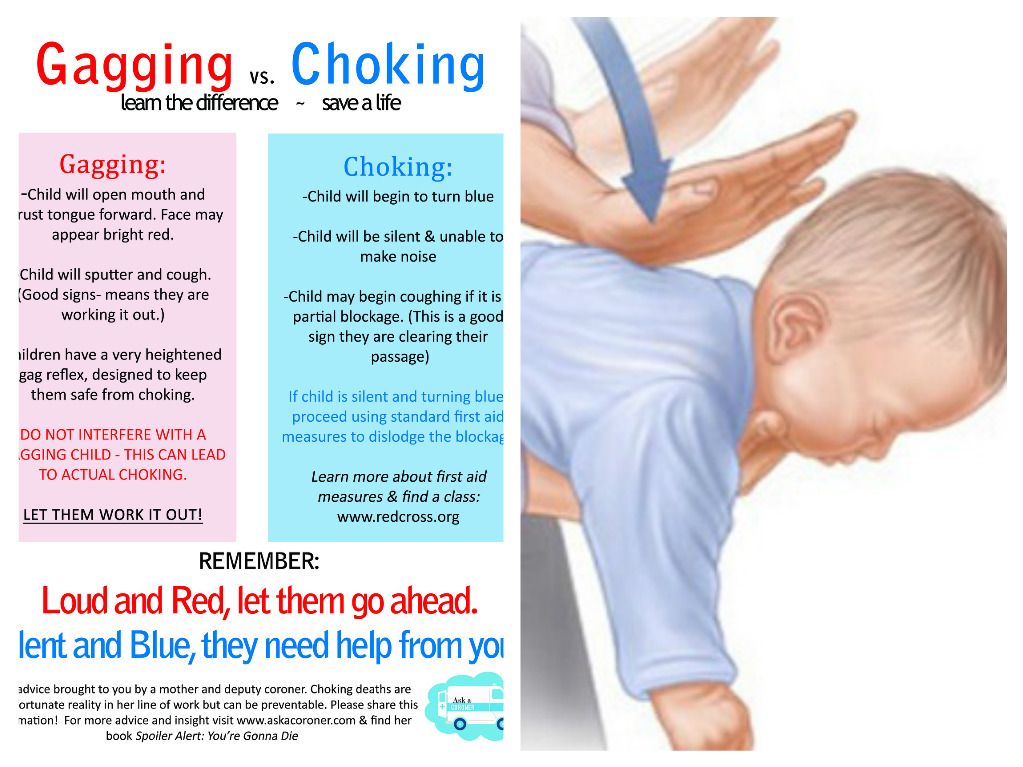
If you have an overactive or forceful let down, this release happens too fast for your baby to respond appropriately, causing them to gulp or choke while breastfeeding.
How do I prevent my baby from choking on milk when breastfeeding?
One of the first things you can do to help prevent your baby from choking while eating is to change the feeding position.
“For breastfeeding mothers who appear to have overactive let down, we typically recommend they nurse in a laid-back position, which reverses gravity’s effect and allows baby to have more control,” says Gorman.
Posner recommends pulling your baby off the breast every once in a while to help them catch their breath and slow down. You can also take your baby off the breast for 20 to 30 seconds when your milk first lets down.
In addition to a laid-back position, the LLL recommends lying on your side so your baby can allow milk to dribble out of his mouth when it flows too quickly.
Furthermore, expressing milk for 1 to 2 minutes before bringing your baby to your breast can help. Doing so allows the forceful let down to happen before baby latches. That said, be careful with this technique, as pumping for too long will tell your body to make more milk and worsen the problem.
Doing so allows the forceful let down to happen before baby latches. That said, be careful with this technique, as pumping for too long will tell your body to make more milk and worsen the problem.
When your baby gags when drinking from a bottle, it’s often due to the positioning. Lying your baby on their back while bottle feeding will lead to a faster milk flow, making it harder for your baby to control the rate of feeding.
“Tilting the bottom of the bottle higher than the nipple increases the rate of milk flow, as will a nipple with too large of a hole for the infant’s age,” Gorman advises. Tilting the bottle too high can lead to involuntary increases in intake and contribute to problems like reflux.
Instead, when bottle-feeding an infant, try using a technique called paced bottle-feeding. “By keeping the bottle parallel to the ground, the baby remains in control of the milk flow, as they are at the breast,” Gorman says.
This technique allows your baby to actively pull milk out of the bottle using their sucking skills and lets them easily take a break when needed. Otherwise, gravity is in control.
Otherwise, gravity is in control.
For babies who are bottle-fed by multiple caregivers, Gorman says all of the people who administer feeds should be educated on paced bottle-feeding.
Finally, you should never prop the bottle up to feed your baby and walk away. Since they can’t control the flow of the milk, it will keep coming even if your baby is not ready to swallow.
“The mechanism of swallowing is complicated and requires several muscle groups working together in concert and in the right time sequence,” Hamilton says. Fortunately, gagging usually diminishes as children get older and become better at swallowing.
Still, if you’re a new parent or caregiver, it’s smart to take infant cardiopulmonary resuscitation (CPR). While rare, a choking episode that caused your baby to turn blue or lose consciousness would be an emergency.
If you’re having problems related to breastfeeding, contact a LLL leader or International Board Certified Lactation Consultant (IBCLC). They can help you with your baby’s latch, positioning, oversupply issues, and forceful let-down problems.
They can help you with your baby’s latch, positioning, oversupply issues, and forceful let-down problems.
If you’re having problems related to bottle feeding, contact your child’s pediatrician. They can help you with bottle and nipple selection, as well as feeding positions that prevent choking on milk or formula.
If your baby continues to choke even after slowing down the rate of feeding, you should contact your pediatrician to rule out any anatomical reasons why swallowing may be challenging.
When you hear your baby gagging or choking during feeding, don’t panic. Take baby off the nipple and prop them up to help them clear their airway.
Often it will take a little time for your baby to learn suckle with ease. In the meantime, try keeping your baby upright during feedings and make the flow of milk slower, if possible. Soon enough, feeding time will be a sweet snuggle session!
The child chokes when feeding: what to do?
Nikulina Anastasia Anatolyevna
pediatrician
A newborn chokes when feeding for various reasons.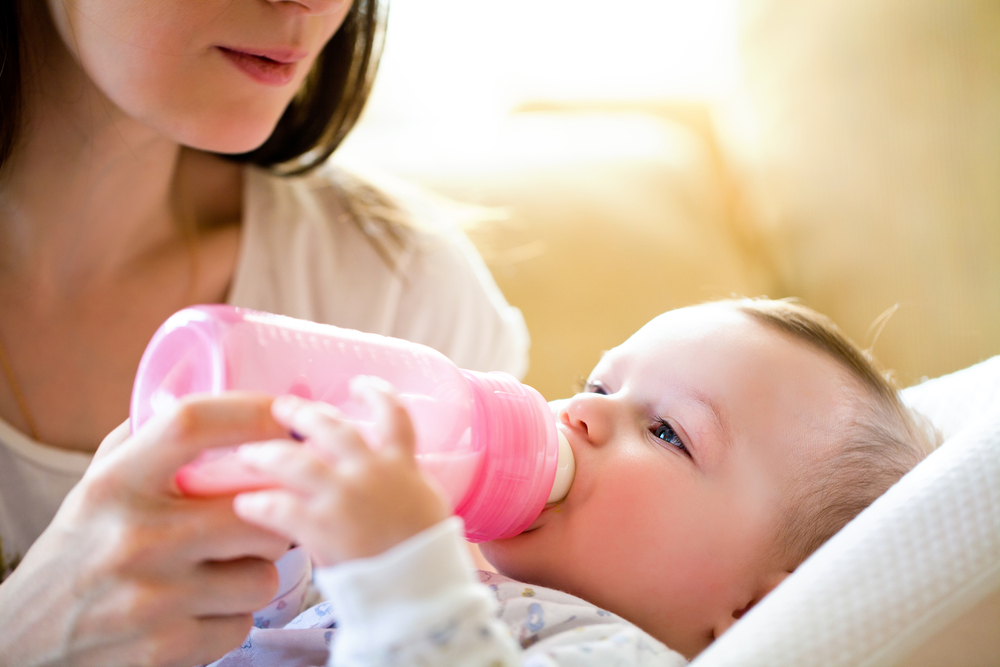 Some of them the mother can eliminate, while others depend on the health of the baby. The pediatrician Anastasia Anatolyevna Nikulina will explain the causes and solutions to this problem.
Some of them the mother can eliminate, while others depend on the health of the baby. The pediatrician Anastasia Anatolyevna Nikulina will explain the causes and solutions to this problem.
— Anastasia Anatolyevna, at what age do children most often choke while feeding?
— In the first weeks of life, when the swallowing reflex is still very weak, it is difficult to dose milk supply from the breast. From the bottle, the flow of formula is controlled by the opening in the nipple and the tilt. If the hole in the nipple is not age appropriate, it is tight, then the newborn swallows air. Excess air with the mixture will enter the intestines, causing discomfort to the baby.
Why does the baby choke while breastfeeding or bottle feeding
- Baby position or bottle angle not optimal. in the optimal position. In the right position, the hand of the woman who holds the child lies on the support. Hold the baby by the back and shoulders, directing the head to the chest.
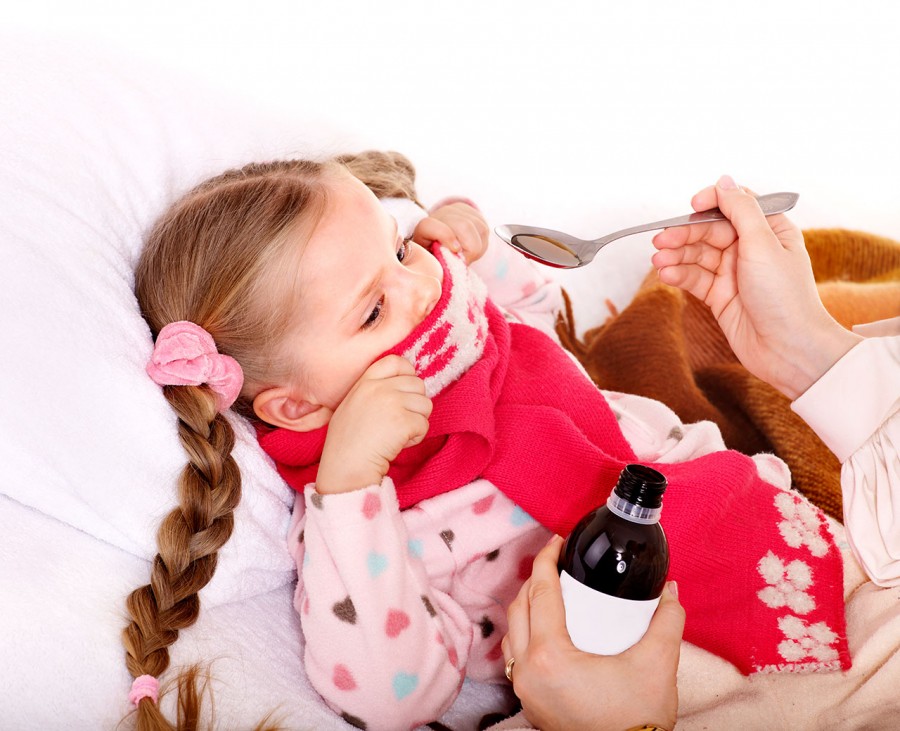 You can’t press hard on the head - the baby will recline it back reflexively.
You can’t press hard on the head - the baby will recline it back reflexively. - Anatomical features of the mother's breast, in which a woman produces enough breast milk, but it is difficult for a child to suck it out, to eat. Before feeding, the mother needs to express some of the milk or massage the breast: it will become soft, and it will be easier for the baby to suck.
- Large nipples are difficult for a baby to grab - to solve the problem, there are special nipple covers through which newborns are fed. You can feed your baby with expressed milk through a bottle and a nipple that is correctly selected for age.
- Hyperlactation. Pressurized breast milk squirts into the baby's mouth. Before feeding, some of the foremilk is expressed, and the following, more fatty, does not form a strong flow. Breaks in the sucking process also help.
- Frequent breastfeeding. The absence of long breaks between attachments to the breast prevents children from hunger and, with it, the rush to feed.
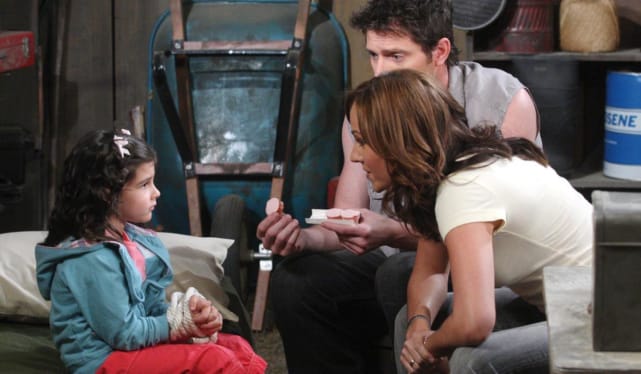
- Incorrect bottle delivery method. The neck of the bottle must be completely filled with milk: this way there will be no air in the milk. The nipple is selected taking into account the age of the baby.
- Disease. Nasal obstruction or cough interferes with feeding. Relief of the symptoms of the disease will improve nutrition. For some children, problems can be caused by improper swallowing or reflux.
- To understand why the baby is having difficulty swallowing, you need to gradually eliminate each of the possible causes. Even the environment matters. During feeding hours, it is desirable for a woman to be alone with the child, nothing should distract him from the process. If the mother finds it difficult to identify the cause, a pediatrician will help her.
— What should I do if my child chokes on milk or formula?
- Spontaneous cough is the main symptom that appears when the act of sucking and swallowing is disturbed. The baby is crying and refuses to eat.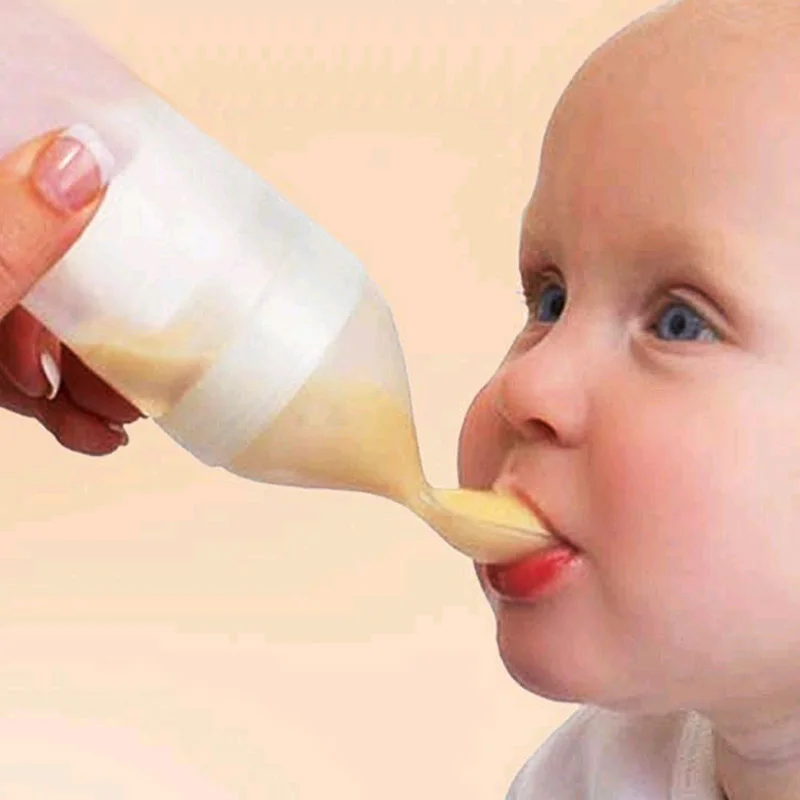
First aid for choking children
If you can’t cough up excess milk on your own or the baby chokes on saliva and starts to choke, you need to do the following, dosing the force of your actions:
- Place the baby on one hand with the belly down, with your free hand apply pressure on the area above the navel (on the area of the baby's stomach), supporting the chin.
- Tilt the child slightly forward, lightly pat on the back. This will increase the cough and help restore breathing.
- Can I continue feeding after the baby clears his throat, or should I take a break?
- Feeding can be continued after the baby clears his throat. It is advisable to vilify it with a column for two to three minutes, so that excess air comes out, and then resume feeding.
- Does increasing the interval between feedings help with the problem?
- On the contrary, the prevention of flooding will be frequent feeding. With numerous attachments, less milk accumulates in the woman’s breast, it becomes easier for the mother to feed.
With numerous attachments, less milk accumulates in the woman’s breast, it becomes easier for the mother to feed.
If the child is choking, feeding should be interrupted. The baby will cough, rest and continue to suck. If the situation recurs frequently, be sure to consult your pediatrician. Your doctor can help you find the best breastfeeding or formula-feeding method for you.
* Breast milk is the best food for babies. WHO recommends exclusive breastfeeding for the first 6 months of a child's life and continued breastfeeding after complementary foods are introduced until the age of 2 years. Before introducing new products into the baby's diet, you should consult with a specialist. The material is for informational purposes and cannot replace the advice of a healthcare professional. For feeding children from birth. The product is certified.
#Tips for Mom #regurgitation 7-12 #regurgitation 12 plus
See also
How to tell if a baby has a food allergy
#allergy #Advice to mom #breast-feeding #baby formula #lure
Kiseleva Elena Sergeevna
Candidate of Medical Sciences, Scientific Advisor MAMAKO ®
Goat's milk in children's nutrition: for or against
#Food #Advice to mom #Baby digestion #breastfeeding
Javier Diaz Castro
professor, lecturer
Omicron in children: how dangerous it is and how babies get sick up to a year
#Advice for Mom
Kiseleva Elena Sergeevna
Candidate of Medical Sciences, Scientific Advisor MAMAKO ®
Why DHA, ARA and lutein are added to infant formula
#baby formulas #Baby Development
Yakovenko Margarita Pavlovna
Candidate of Medical Sciences, Pediatrician, Pediatric Neurologist, Medical Advisor MAMAKO ®
Calendar of doctor visits during the first year of a child's life
#Advice for Mom
Kizino Polina Alexandrovna
pediatrician, perinatal psychologist
How to properly rock a baby to sleep
#Tips for Mom
Kizino Polina Alexandrovna
pediatrician, perinatal psychologist
First tests and vaccinations: how to prepare yourself and your child
#Advice for Mom
Kizino Polina Alexandrovna
pediatrician, perinatal psychologist
Digestion in newborns and infants and its features
#Baby Digestion #breast-feeding #baby formula #Lure #Advice to mom #Baby Development
Kiseleva Elena Sergeevna
Candidate of Medical Sciences, Scientific Advisor MAMAKO ®
Neurologist for a child under one year old: first examination
#Tips for Mom #Baby Development
Yakovenko Margarita Pavlovna
Candidate of Medical Sciences, Pediatrician, Pediatric Neurologist, Medical Advisor MAMAKO ®
Principles of successful lactation: checklist for mom
#Tips for Mom #breastfeeding
Yakovenko Margarita Pavlovna
Candidate of Medical Sciences, Pediatrician, Pediatric Neurologist, Medical Advisor MAMAKO ®
See all
View all
Goat's milk in children's nutrition: for or against
# Lure # Tips for Mom # Baby's digestion # breastfeeding
Javier Diaz Castro
professor, lecturer
Digestion in newborns and infants and its features
# Baby digestion # breast-feeding # infant formula # Lure # Tips for Mom # Baby development
Kiseleva Elena Sergeevna
Candidate of Medical Sciences, Scientific Advisor MAMAKO ®
Neurologist for a child under one year old: first examination
# Tips for mom # Baby development
Yakovenko Margarita Pavlovna
Candidate of Medical Sciences, Pediatrician, Pediatric Neurologist, Medical Advisor MAMAKO ®
Calendar of doctor visits during the first year of a child's life
# Tips for mom
Kizino Polina Aleksandrovna
pediatrician, perinatal psychologist
Principles of successful lactation: checklist for mom
# Tips for mom # breastfeeding
Yakovenko Margarita Pavlovna
Candidate of Medical Sciences, Pediatrician, Pediatric Neurologist, Medical Advisor MAMAKO ®
How to properly rock a baby to sleep
# Tips for mom
Kizino Polina Alexandrovna
pediatrician, perinatal psychologist
Why DHA, ARA and lutein are added to infant formula
# infant formula # Baby development
Yakovenko Margarita Pavlovna
Candidate of Medical Sciences, Pediatrician, Pediatric Neurologist, Medical Advisor MAMAKO ®
Omicron in children: how dangerous it is and how babies get sick up to a year
# Tips for mom
Kiseleva Elena Sergeevna
Candidate of Medical Sciences, Scientific Advisor MAMAKO ®
See all
First tests and vaccinations: how to prepare yourself and your child
# Tips for mom
Kizino Polina Alexandrovna
pediatrician, perinatal psychologist
How to tell if a baby has a food allergy
# allergy # Tips for Mom # breast-feeding # infant formula # lure
Kiseleva Elena Sergeevna
Candidate of Medical Sciences, Scientific Advisor MAMAKO ®
See all
View all
View all
Emergencies
Cough
Cough is probably the most common problem parents face. Very often, a cough, even if it sounds scary, has a harmless cause and goes away on its own. Sometimes coughing is a serious symptom. Let's try to figure out how to behave when a child coughs and when to start sounding the alarm.
Very often, a cough, even if it sounds scary, has a harmless cause and goes away on its own. Sometimes coughing is a serious symptom. Let's try to figure out how to behave when a child coughs and when to start sounding the alarm.
What is a cough?
Cough is a protective reflex designed to clear the airways. During a cough push, the air abruptly leaves the lungs and forces everything that interferes with breathing - sputum and foreign bodies - to come out. If you think about the mechanism of coughing, it becomes clear that it is far from always necessary to “suppress” it.
What causes and what does a cough look like?
The most common cause of cough is a viral infection. Viruses can cause damage to the respiratory tract at different levels - from the nose (with a common cold) to the bronchi, bronchioles and lungs, and coughing is a common symptom in all these diseases.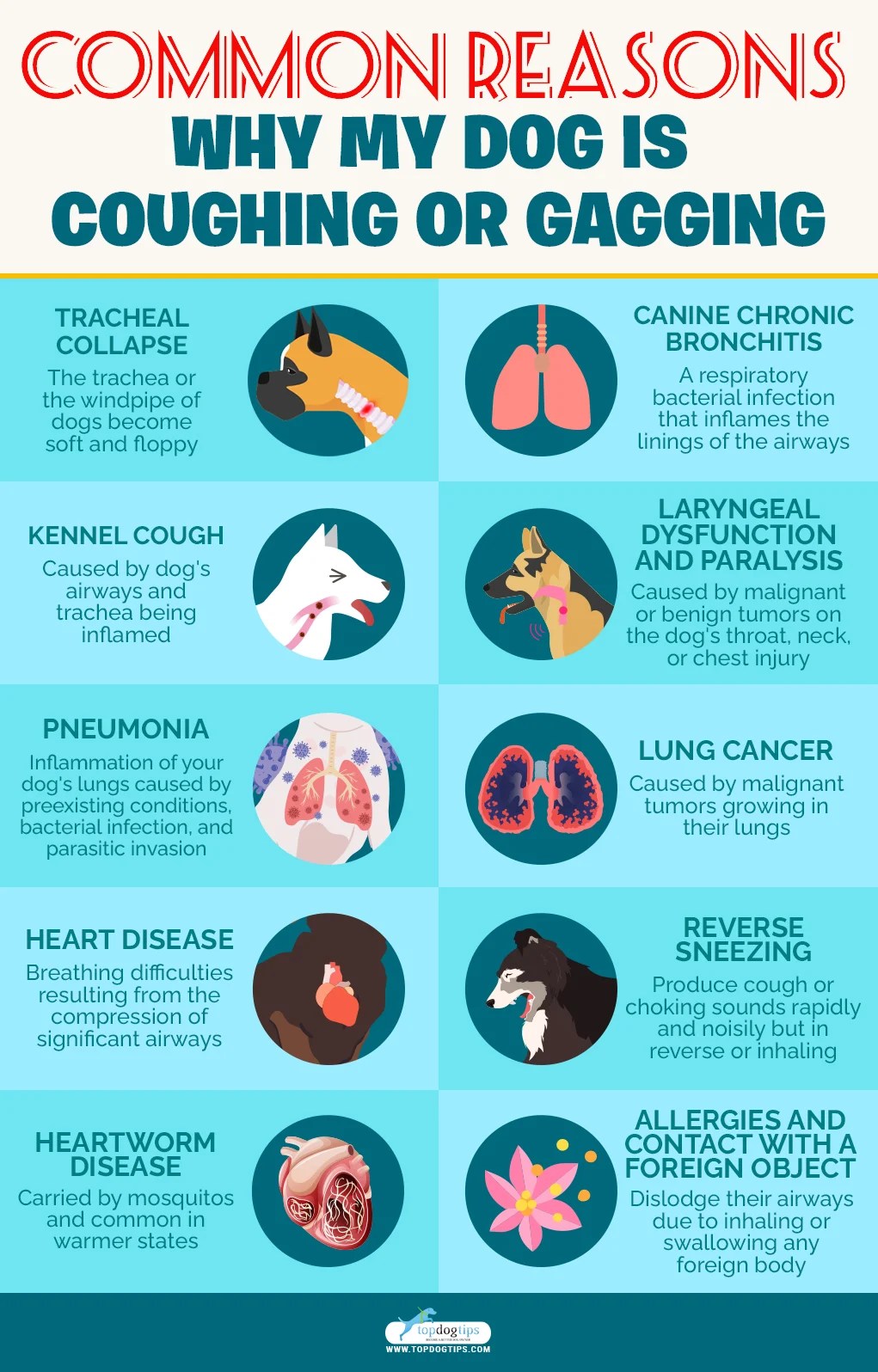 For example, sore throat and nasal discharge flowing down the back of the throat irritate the mucous membrane of the upper respiratory tract and stimulate the cough reflex. Due to irritation of the mucous membrane of the pharynx, a dry, hacking cough occurs, which will definitely pass without treatment, but in the acute period it can be quite frequent and painful, and even disrupt night's sleep. A runny nose and discharge along the back of the throat provoke a wet cough, while the child begins to cough when changing position of the body, especially in the morning and at night when he gets up, lies down or rolls over. If the virus infects the mucous membrane of the larynx, a false croup develops, that is, swelling and, as a result, narrowing of the lumen of the larynx, which is accompanied by a "barking" cough, hoarseness, and a characteristic noisy breath (the so-called stridor). With inflammation of the bronchi, bronchioles and alveoli - bronchitis, bronchiolitis and pneumonia, respectively - sputum accumulates in the lumen of the respiratory tract, swelling of the mucous membrane occurs, resulting in cough and shortness of breath.
For example, sore throat and nasal discharge flowing down the back of the throat irritate the mucous membrane of the upper respiratory tract and stimulate the cough reflex. Due to irritation of the mucous membrane of the pharynx, a dry, hacking cough occurs, which will definitely pass without treatment, but in the acute period it can be quite frequent and painful, and even disrupt night's sleep. A runny nose and discharge along the back of the throat provoke a wet cough, while the child begins to cough when changing position of the body, especially in the morning and at night when he gets up, lies down or rolls over. If the virus infects the mucous membrane of the larynx, a false croup develops, that is, swelling and, as a result, narrowing of the lumen of the larynx, which is accompanied by a "barking" cough, hoarseness, and a characteristic noisy breath (the so-called stridor). With inflammation of the bronchi, bronchioles and alveoli - bronchitis, bronchiolitis and pneumonia, respectively - sputum accumulates in the lumen of the respiratory tract, swelling of the mucous membrane occurs, resulting in cough and shortness of breath. Unlike viral bronchitis and bronchiolitis, pneumonia is more commonly caused by bacteria and is accompanied by fever in addition to coughing and shortness of breath. In bronchial asthma, bronchospasm and accumulation of thick sputum in them occur after contact with an allergen, which also provokes a cough.
Unlike viral bronchitis and bronchiolitis, pneumonia is more commonly caused by bacteria and is accompanied by fever in addition to coughing and shortness of breath. In bronchial asthma, bronchospasm and accumulation of thick sputum in them occur after contact with an allergen, which also provokes a cough.
When should an ambulance be called for a child with a cough?
- If the child has the following signs along with coughing: it is very difficult for the child to breathe: you can see that the child is breathing with difficulty, it is difficult for him to speak (or scream, if we are talking about a baby) due to difficulty in breathing, the child has "groaning" or "groaning" breathing;
- the child is unconscious and/or has stopped breathing;
- the child's lips turned blue.
If the child does not have the most severe symptoms, but the child is concerned, see a doctor. An important sign of trouble is the appearance of the child - if he is lethargic, looks sick and if you cannot attract his attention and catch his eye. Shortness of breath, that is, rapid breathing, accompanied by an effort of the respiratory muscles and retraction of the intercostal spaces and the jugular fossa (depression above the sternum), is a sign that indicates damage to the lower respiratory tract. If you notice shortness of breath in a child, be sure to consult a doctor. Increased body temperature, especially fever above 39- 40 ° C, also requires that the child be examined by a doctor, as cough and fever can be symptoms of pneumonia.
An important sign of trouble is the appearance of the child - if he is lethargic, looks sick and if you cannot attract his attention and catch his eye. Shortness of breath, that is, rapid breathing, accompanied by an effort of the respiratory muscles and retraction of the intercostal spaces and the jugular fossa (depression above the sternum), is a sign that indicates damage to the lower respiratory tract. If you notice shortness of breath in a child, be sure to consult a doctor. Increased body temperature, especially fever above 39- 40 ° C, also requires that the child be examined by a doctor, as cough and fever can be symptoms of pneumonia.
Special attention should be paid to children in the first months of life, because in young children, serious illnesses can be erased, and the condition may worsen suddenly. In case of fever (that is, if the child's rectal temperature is > 38 ° C) in children under three months old, it is imperative to consult a doctor.
Should yellow or greenish sputum cause concern?
Yellow or green sputum does not always indicate a bacterial infection.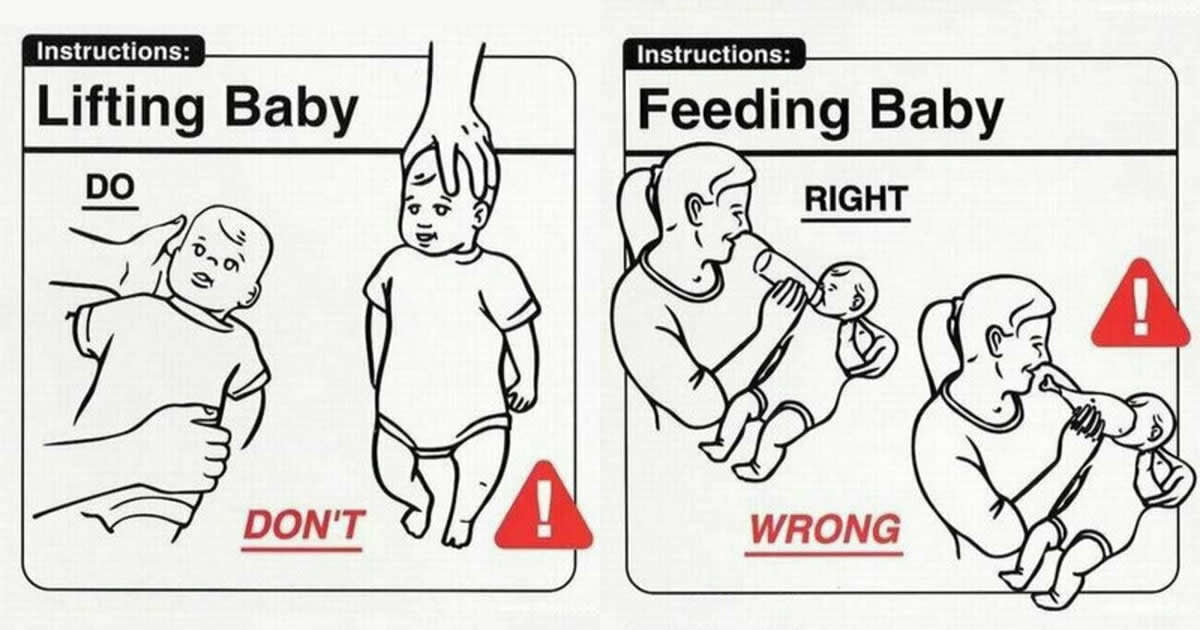 With viral bronchitis and bronchiolitis, the yellow-green color of sputum is associated with the fact that cells of the mucous membrane of the respiratory tract, which the virus has damaged, enter the sputum. As a new mucous membrane is formed, the desquamated cells come out with sputum, so there is no need to be scared if the child coughs up yellow or even greenish sputum, since in most cases this is a normal manifestation of a viral infection that does not require antibiotics.
With viral bronchitis and bronchiolitis, the yellow-green color of sputum is associated with the fact that cells of the mucous membrane of the respiratory tract, which the virus has damaged, enter the sputum. As a new mucous membrane is formed, the desquamated cells come out with sputum, so there is no need to be scared if the child coughs up yellow or even greenish sputum, since in most cases this is a normal manifestation of a viral infection that does not require antibiotics.
What should I do if my child coughs at night?
Most often, nocturnal cough is associated with the fact that when the child lies in bed, discharge from the nose and paranasal sinuses drain into the throat and cause a cough reflex. When a child rolls over in bed or gets up from a horizontal to an upright position, a coughing fit occurs. In such cases, the doctor will prescribe a topical treatment for the child to reduce the runny nose and, as a result, reduce the cough.
Night cough also occurs with pathology of the lower respiratory tract. Therefore, if your child is concerned about a nighttime cough, consult a doctor.
What if the child coughs to vomit?
If your child has a paroxysmal cough before vomiting, contact your pediatrician, as this may be a symptom of whooping cough. Whooping cough is especially dangerous for children in the first months of life. Sometimes whooping cough develops even in children who were vaccinated against it, but a lot of time has passed since the last revaccination.
Some children have a very easy gag reflex, and then they may vomit when coughing, even if the cough is simply associated with a runny nose. If vomiting occurs against the background of coughing, feed the child more often, but in small portions.
Prolonged cough
It is not uncommon for a persistent cough to be caused by several successive viral infections. The child does not have time to recover from one infection and picks up another. In this case, the cough can last for several weeks and greatly frighten parents, although its cause is trivial.
The child does not have time to recover from one infection and picks up another. In this case, the cough can last for several weeks and greatly frighten parents, although its cause is trivial.
However, a prolonged cough may be associated with allergies, including bronchial asthma, as well as whooping cough and other diseases of the respiratory tract and ENT organs (a chronic cough may even be due to earwax plugs in the ears!), so in case persistent cough, consult your doctor.
How to treat a cough?
Cough can have many causes, and each case is treated differently. Show the child to the doctor to understand what the cough is connected with and how to help the child.
If the cough is accompanied by sputum production (wet, productive cough), sputum production should be stimulated to facilitate expectoration. Give your child more fluids (for example, apple juice or warm chicken broth can be given if age-appropriate and not allergic to these foods). If the air in the children's bedroom is dry, install a humidifier.
If the air in the children's bedroom is dry, install a humidifier.
Fight nonproductive (dry) cough by reducing upper respiratory irritation. To soften the cough and soothe the airways, give the child a drink of water or apple juice, this also helps with a coughing fit. Avoid giving carbonated drinks or citrus drinks as they can irritate inflamed mucous membranes. If the child is intolerant of honey, try giving it. Children over 6 years old can suck on cough drops. If a cough interferes with sleep, going to kindergarten and school, consult a doctor, he will prescribe an antitussive.
Steam in the bathroom can help with a coughing fit. Go into the bathroom, close the door, turn on the hot shower and wait a few minutes. After the bath is filled with steam, go there with the child, sit for about 20 minutes. Try reading a book or playing with the child so that he is distracted.
Smoking is strictly prohibited at home! This contributes to frequent respiratory infections in the child and aggravates their course.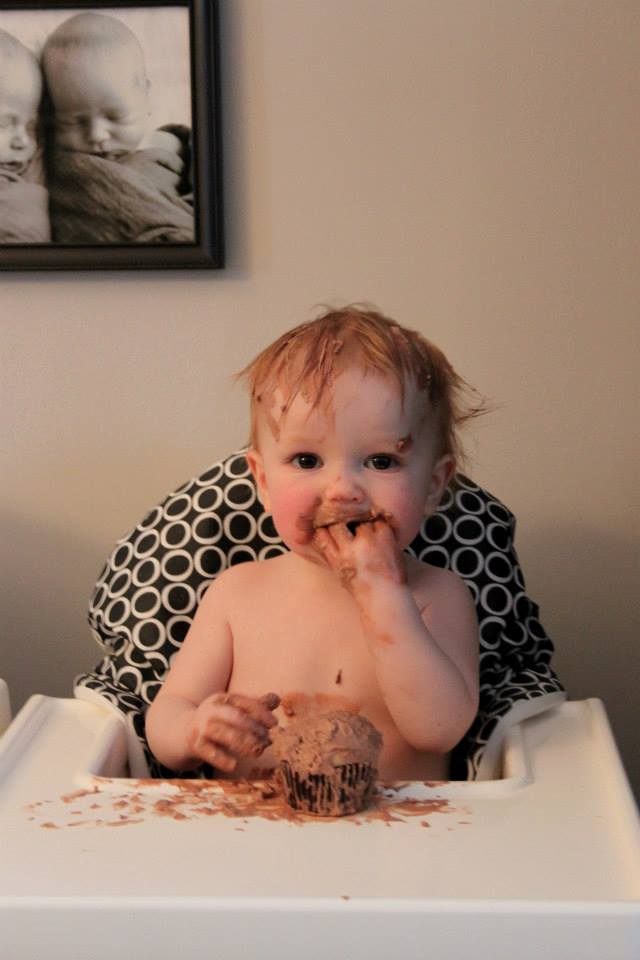
Medicines such as antibiotics and inhalations with bronchodilators, anti-inflammatory and mucolytic drugs are prescribed only by a doctor and are not required in every case.
Up
Fever
Fever is an increase in body temperature over 38 ºС. Some symptoms and laboratory and instrumental studies help to understand the cause of the fever and prescribe the necessary treatment.
If the fever is accompanied by a runny nose, cough, and "red throat", the most likely cause is a viral infection. Since antibiotics have no effect on viruses, antibiotic therapy in case of a viral infection is not prescribed.
High fever (greater than 39°C) with chills should alert. Other symptoms that require immediate medical attention are the refusal of the child to eat and drink, severe lethargy, lack of "eye" contact with the child.
Parents should know how to help a child with a fever .
Only ibuprofen (10 mg/kg per dose) and paracetamol (15 mg/kg per dose) are allowed for use in children. From drugs based on ibuprofen in a pharmacy, you can buy nurofen, and from drugs based on paracetamol - panadol, cefecon, efferalgan. Metamizole sodium (or analgin), including as part of a "lytic mixture", can cause severe blood complications, and nimesulide (nimulide, nise) can cause life-threatening liver damage. If the child does not have a severe background pathology, such as heart disease or epilepsy, and if he satisfactorily tolerates fever (is interested in others, does not refuse to drink, does not complain of pain), antipyretic drugs are given at a temperature of 38.5 - 39ºС and above.
And there is no need to achieve a decrease in body temperature immediately to 36.6 ºС! A good effect is considered to be a decrease in fever to 38 ºС. Safe and effective methods of physical cooling are rubbing with water at room temperature (not alcohol or vinegar!), which allows you to reduce body temperature by 0. 5 - 1.0 ºС in a few minutes. However, if the child has chills, if he has cold hands and feet, rubbing will not be effective. In such cases, massage of the hands and feet helps, which reduces vasospasm and improves peripheral circulation, and antispasmodic drugs, such as no-shpa, are also used.
5 - 1.0 ºС in a few minutes. However, if the child has chills, if he has cold hands and feet, rubbing will not be effective. In such cases, massage of the hands and feet helps, which reduces vasospasm and improves peripheral circulation, and antispasmodic drugs, such as no-shpa, are also used.
Up
False croup
False croup occurs quite often in babies, so mothers need to know about it. Only parents can notice the first signs of narrowing of the larynx in time and help the child in time. The reason is viral infections. In children under 5 - 6 years of age, the airways are narrower than in adults, and therefore croup develops much more often.
What is false croup?
Croup is difficulty in breathing due to constriction of the larynx. To feel where the larynx is, you can put your hand on the front of the neck and make any sound - the larynx will vibrate.
To feel where the larynx is, you can put your hand on the front of the neck and make any sound - the larynx will vibrate.
This part of the airway is quite narrow, and if the mucous membrane swells, it can completely block the lumen of the larynx, and air will not enter the lungs. In children under 5 - 6 years of age, the airways are narrower than in adults, and therefore croup develops much more often.
Unlike false, true croup begins with diphtheria, when the lumen of the larynx is blocked by dense films. Thanks to vaccinations (DPT, ADS-M), this disease, fortunately, has become rare.
The cause of false croup is acute viral infections (for example, parainfluenza virus or respiratory syncytial virus). The mucous membrane becomes inflamed, swells, and although films do not form, as in diphtheria, the result is the same - it is difficult for the child to breathe.
How does it all start?
Usually, the usual symptoms of acute respiratory infections appear first, i. e. runny nose, cough, fever. The first signs of the proximity of a false croup appear or intensify in the evening - this is a growing dry "barking" cough and a hoarse voice.
e. runny nose, cough, fever. The first signs of the proximity of a false croup appear or intensify in the evening - this is a growing dry "barking" cough and a hoarse voice.
Then the breath becomes "noisy" - at first only during crying or anxiety, that is, when the baby breathes deeper and faster. After a while, these symptoms persist even in a calm state.
With croup, it is difficult for a baby to inhale exactly, that is, the inhalation turns out to be noisy, with effort, and the exhalation remains normal. During inhalation, you can notice how the jugular fossa (depression in the lower part of the neck between the collarbones) is drawn inward.
Is it possible to prevent false croup?
There are pathogens that most often cause croup: parainfluenza virus, influenza virus and respiratory syncytial virus. If a child has contracted this particular infection, the risk of developing croup is high, and, unfortunately, there are no remedies that protect against it.
There are children who tolerate colds without this complication, but in some the mucous membrane is more prone to swelling, and if there has already been one episode of difficulty in breathing with ARI, such conditions are likely to recur. Parents need to be ready for them - until the child grows up, and the croup ceases to threaten him.
What to do with false croup?
If you notice its signs, first of all, you need to calm yourself and the child, because when you are excited, the muscles of the larynx contract, and it becomes even harder to breathe.
For a "barking" cough, as long as breathing is silent and not labored, steam inhalation may help. Turn on hot water in the bathroom, let the child breathe in moist air for a few minutes.
If this does not help and it becomes difficult to breathe (noisy breath, retraction of the jugular fossa), call an ambulance and continue to do steam inhalation until it arrives. The doctor will prescribe special inhalations with a local hormonal preparation for croup. Don't let the word "hormonal" scare you, because this drug works only in the respiratory tract, eliminating inflammation, and no other medicine for false croup will not be so effective. In severe cases, the doctor will inject a hormone (prednisolone or dexamethasone) intramuscularly. Don't worry about side effects because short cycles of hormones are safe and life-saving in these situations.
The doctor will prescribe special inhalations with a local hormonal preparation for croup. Don't let the word "hormonal" scare you, because this drug works only in the respiratory tract, eliminating inflammation, and no other medicine for false croup will not be so effective. In severe cases, the doctor will inject a hormone (prednisolone or dexamethasone) intramuscularly. Don't worry about side effects because short cycles of hormones are safe and life-saving in these situations.
If you are offered to hospitalize your child, do not refuse, because after temporary relief, breathing problems may recur.
There are conditions that can be confused with false croup, such as inflammation of the epiglottis (the cartilage that closes the larynx when swallowing). This disease is called epiglottitis: the child's temperature rises above 39 degrees, there is a severe sore throat, the mouth is difficult to open, and hormonal preparations do not help the child.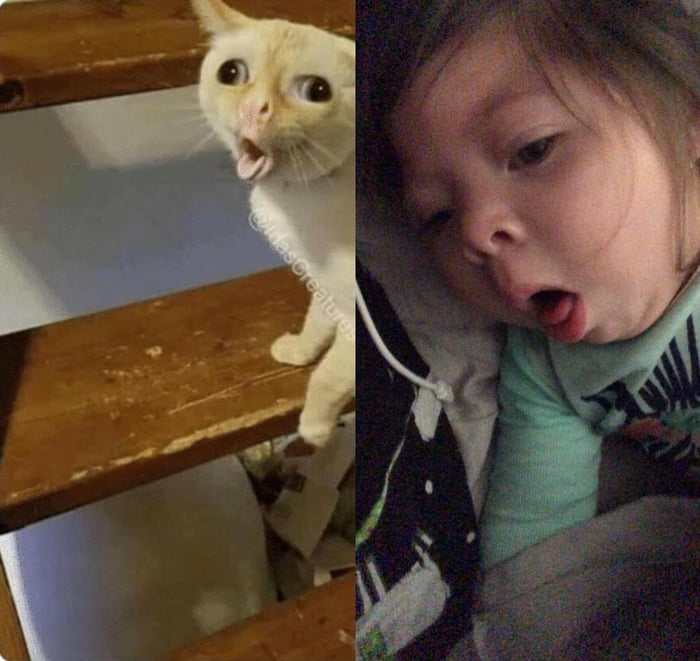
If the epiglottis is inflamed, the child is admitted to the hospital and treated with antibiotics. But this disease is rare, and false croup is caused by viruses, so it makes no sense to take antibiotics.
Is it possible to stop an attack of croup on your own?
If it is not the first time that false croup occurs in a child, you can take home a special device for inhalation - a nebulizer (choose a compressor model, since ultrasound can destroy drugs used for croup). Your doctor will tell you what medication to have at home and how much to use if needed.
The child can return to kindergarten as soon as the body temperature returns to normal and the child feels well.
Up
Vomiting and diarrhea
Acute gastroenteritis is characterized by an increase in body temperature (from subfebrile condition to high fever), vomiting, stool thinning. Rotavirus is the most common cause of gastroenteritis. The most severe is the first episode of rotavirus gastroenteritis in children from 6 months to 2-3 years. The peak incidence of this infection occurs in the winter - spring.
The most severe is the first episode of rotavirus gastroenteritis in children from 6 months to 2-3 years. The peak incidence of this infection occurs in the winter - spring.
The danger of viral gastroenteritis is associated with rapid dehydration and electrolyte disturbances due to the loss of water and salts with loose stools and vomiting. Therefore, feeding the child is of fundamental importance. In order not to provoke vomiting, you need to drink fractionally (1 - 2 teaspoons), but often, if necessary, every few minutes. For convenience, you can use a syringe without a needle or a pipette. In no case should you drink the child with just water, this only exacerbates electrolyte disturbances! There are special saline solutions for drinking - rehydron (optimally ½ sachet per 1 liter of water), Humana electrolyte, etc.
The daily requirement for fluid is presented in the table:
Week. Daily need for liquid
2 - 10 kg 100 ml/kg
10 - 20 kg 1000 ml/kg per kg over 10 kg
> 20 kg 1500 ml + 20 ml/kg for each kg over 20 kg
In addition, ongoing fluid losses with loose stools and vomiting are taken into account - for each episode of diarrhea / vomiting, an additional 100 - 200 ml of fluid is given.
Intravenous rehydration (fluid replenishment with drips) is done only for severe dehydration and persistent vomiting. In all other cases, you need to drink the child - it is safe, effective and painless.
Smecta (but do not give smecta if it provokes vomiting), espumizan or Sab simplex are used as adjuvants. Enterofuril is not recommended for use, as it is not effective either in viral infections or in invasive bacterial intestinal infections. In the diet during the acute period, fresh vegetables and fruits (except bananas), sweet drinks are excluded, and whole milk is limited only in older children.
For parents, you need to know the first signs of dehydration - a decrease in the frequency and volume of urination, thirst, dry skin and mucous membranes. With increasing dehydration, the child becomes lethargic, stops urinating, thirst disappears, the skin loses turgor, and the eyes “sink”. In this case, there is no time to waste, it is necessary to call a doctor and hospitalize the child.
The appearance of blood and mucus in the stool in a child should be alerted, because this is typical for bacterial enterocolitis. The stool in such infections is light (unlike the copious watery stool in rotavirus infection), false urge to defecate and abdominal pain may occur. Drinking water in such cases may not be enough, and, as a rule, antibiotics are required.
Up
Pneumonia
One of the serious diseases in children is pneumonia, or pneumonia. Pneumonia can pose a threat to a child's life. Fortunately, modern medicine has learned to cope well with pneumonia, and this disease can be completely cured in most cases. Therefore, if your baby gets sick with fever and cough, contact your pediatrician. If pneumonia is suspected, a doctor may order an x-ray of the lungs to confirm the diagnosis.
What is pneumonia?
Pneumonia is an inflammation of the lung tissue, that is, the deepest part of the respiratory system. Normally, gas exchange occurs in the lungs, that is, oxygen from the air enters the blood, and carbon dioxide is released from the blood into the environment. When part of the lung is inflamed, the breathing function in the affected lung is affected and the child develops shortness of breath, that is, rapid and labored breathing. Substances produced during the immune system's fight against bacteria cause fever (if the body temperature rises above 38 ° C, this is called a fever). The accumulation of sputum in the alveoli and bronchi and swelling of the mucous membrane stimulate the cough reflex, and a cough occurs. If the focus of pneumonia is near the lining of the lung, called the pleura, chest pains may occur when breathing and coughing.
Normally, gas exchange occurs in the lungs, that is, oxygen from the air enters the blood, and carbon dioxide is released from the blood into the environment. When part of the lung is inflamed, the breathing function in the affected lung is affected and the child develops shortness of breath, that is, rapid and labored breathing. Substances produced during the immune system's fight against bacteria cause fever (if the body temperature rises above 38 ° C, this is called a fever). The accumulation of sputum in the alveoli and bronchi and swelling of the mucous membrane stimulate the cough reflex, and a cough occurs. If the focus of pneumonia is near the lining of the lung, called the pleura, chest pains may occur when breathing and coughing.
What causes pneumonia?
There are many infections that can cause pneumonia. Streptococcus pneumoniae is the most common cause of so-called "typical" pneumonia. Pneumococcal pneumonia is accompanied by fever, cough, shortness of breath, lethargy, and decreased appetite.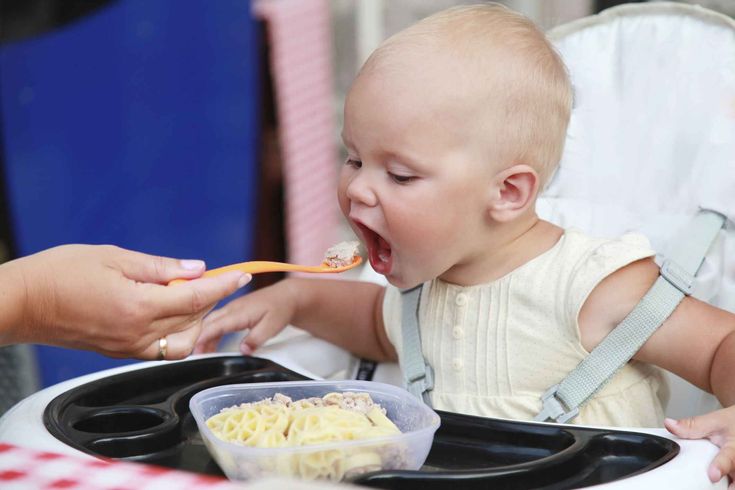 Less commonly, pneumonia is caused by other pathogens - hemophilus influenzae (Haemophilus influenzae) type b, pyogenic streptococcus (Streptococcus pyogenes) and Staphylococcus aureus (Staphylococcus aureus). "Atypical" pneumonia, which is usually milder and quite contagious, is caused by mycoplasmas and chlamydia. Less commonly, pneumonia is caused by viruses (adenovirus, RS virus) - such pneumonias are rare and can be very difficult. Pneumonia can develop suddenly or be a complication of the flu.
Less commonly, pneumonia is caused by other pathogens - hemophilus influenzae (Haemophilus influenzae) type b, pyogenic streptococcus (Streptococcus pyogenes) and Staphylococcus aureus (Staphylococcus aureus). "Atypical" pneumonia, which is usually milder and quite contagious, is caused by mycoplasmas and chlamydia. Less commonly, pneumonia is caused by viruses (adenovirus, RS virus) - such pneumonias are rare and can be very difficult. Pneumonia can develop suddenly or be a complication of the flu.
What are the symptoms of pneumonia?
The most important symptom of pneumonia is fever. In a young child, fever may be the only manifestation. Fever above 39.5°C with chills and fever that is poorly reduced after taking antipyretic drugs should be especially alert. Although not always a high fever that does not respond well to antipyretics is a symptom of pneumonia. This may be a manifestation of a respiratory viral infection.
The second important symptom of pneumonia is a cough. The nature of the cough matters. Particularly alarming are the "deep" cough, cough at night and cough before vomiting.
The nature of the cough matters. Particularly alarming are the "deep" cough, cough at night and cough before vomiting.
Severe pneumonia is usually accompanied by shortness of breath, that is, rapid and labored breathing. Sometimes a symptom of pneumonia is pain in the abdomen, which occurs due to irritation of the pleura (lung membrane) during inflammation of the lung area adjacent to the pleura and due to frequent coughing and, accordingly, tension in the abdominal muscles.
Very important signs that speak in favor of pneumonia are symptoms of intoxication, such as fatigue, weakness, refusal to eat and even drink. At the same time, unlike pneumococcal pneumonia, with mycoplasmal pneumonia, the child may feel well.
Coughing and wheezing in the lungs are symptoms not only of pneumonia, but also of bronchitis. It is very important that the doctor distinguishes pneumonia from bronchitis, since antibiotics are not always required for bronchitis and only if its mycoplasmal etiology is suspected.
What can happen if pneumonia is not treated?
This is fraught with complications that are more likely to occur if pneumonia is left untreated. Complications of pneumonia are inflammation of the pleura (pleurisy) and the formation of a cavity in the lung filled with pus (lung abscess). In such cases, a longer course of antibiotics will be required, and sometimes the help of a surgeon.
How to treat pneumonia?
If you have bacterial pneumonia, your doctor will prescribe an antibiotic. The doctor will decide which antibiotic to choose depending on the suspected cause of the pneumonia. In most cases, the child can be given the antibiotic by mouth (as a suspension or tablets) rather than by injection. The effect of the antibiotic occurs within 24-48 hours. If after 1-2 days the child does not feel better and the temperature rises, consult a doctor again.
Usually a child with pneumonia can be treated at home. Hospitalization is required for severe and complicated pneumonia, when the child needs intravenous antibiotics, supplemental oxygen, pleural punctures, and other serious medical interventions.
Hospitalization is required for severe and complicated pneumonia, when the child needs intravenous antibiotics, supplemental oxygen, pleural punctures, and other serious medical interventions.
Give the child an antipyretic (ibuprofen or paracetamol) if the body temperature rises above 38.5-39°C. Antitussives, such as butamirate (Sinekod drug), are contraindicated in pneumonia.
Can pneumonia be prevented?
There are vaccines designed to protect against pneumococcus and Haemophilus influenzae, which cause the most severe forms of pneumonia (against pneumococcus - vaccines "Prevenar", "Pneumo 23", against Haemophilus influenzae - "Act-HIB", "Hiberix", a component against Haemophilus influenzae sticks are part of the Pentaxim vaccine, components against pneumococcus and Haemophilus influenzae are simultaneously part of Synflorix). Since pneumococcal pneumonia often develops as a complication of influenza, influenza vaccination is helpful.

